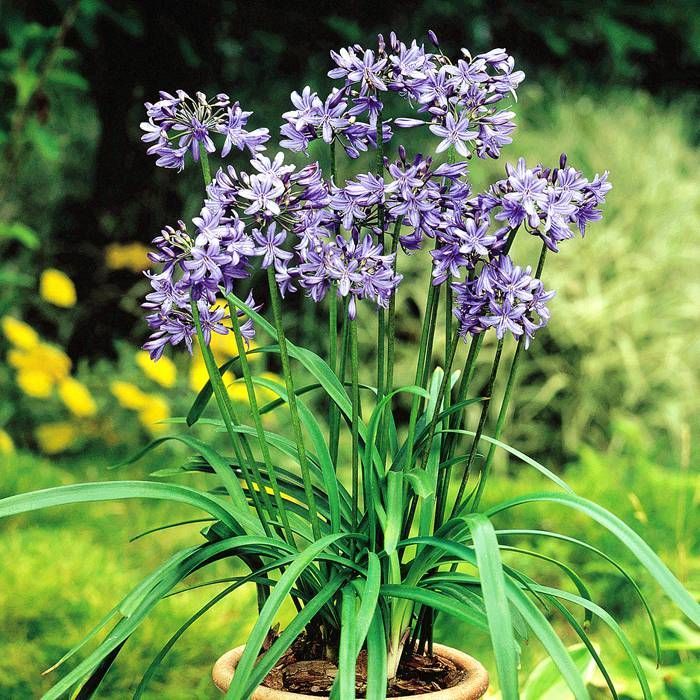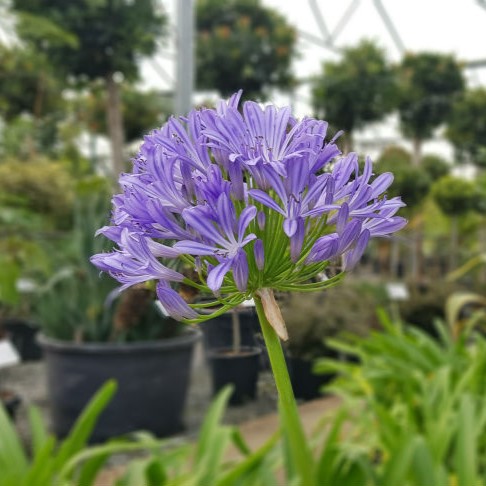Agapanthus Expanding Conditions: Dirt, Sunshine, and Watering
Agapanthus Expanding Conditions: Dirt, Sunshine, and Watering
Blog Article
Mastering the Art of Agapanthus Care: Crucial Actions for Healthy And Balanced Growth and Vivid Blooms
In the world of cultivation, the cultivation of agapanthus stands as a fulfilling venture for those who look for to support these stylish flowering plants. With their striking flowers and stylish vegetation, agapanthus has actually captured the attention of gardeners worldwide. However, attaining ideal development and vibrant blooms needs a nuanced method that encompasses different important actions. From choosing the ideal selection to grasping pruning strategies, the journey in the direction of growing prospering agapanthus plants is complex and holds the crucial to opening the complete potential of these botanical treasures.

Selecting the Right Agapanthus Range

When picking the right Agapanthus variety for your garden, consider elements such as environment viability, blossom color, and development routine. Agapanthus, typically recognized as Lily of the Nile or African lily, comes in a variety of shades varying from shades of blue and purple to white. Choose a bloom color that enhances your existing garden scheme to create an unified landscape. In addition, think about the environment in your region to guarantee the Agapanthus selection you select can flourish in your specific problems. Some ranges are much more tolerant of chilly temperature levels, while others prefer warmer environments. Understanding the development routine of various Agapanthus varieties is vital for proper positioning within your yard. Some selections have a clumping growth behavior, perfect for boundaries or containers, while others have a more dispersing nature, ideal for ground cover or mass growings. By thoroughly evaluating these variables, you can choose the excellent Agapanthus variety to boost the beauty of your yard.
Perfect Growing Conditions
Taking into consideration the ideal ecological requirements is important for successful Agapanthus farming. Agapanthus prospers in well-draining dirt with a slightly acidic to neutral pH level. When planting, choose an area that receives full sunlight to partial color. In hotter environments, providing some afternoon shade can stop scorching of the leaves. Agapanthus plants are sensitive to cool temperature levels and should be safeguarded from frost throughout winter months.
To make certain healthy growth and vivid blossoms, plant Agapanthus bulbs at a deepness of concerning 2-4 inches and room them 8-12 inches apart. Mulching around the base of the plants helps maintain wetness and subdues weed development.
Watering and Fertilizing Tips
Keeping appropriate dampness levels and offering essential i loved this nutrients are crucial aspects in the treatment program for Agapanthus plants. When it comes to watering Agapanthus, it is critical to strike an equilibrium. These plants like consistently damp soil however are prone to root rot if overwatered.
Feeding Agapanthus is necessary for advertising healthy development and prolific blossoms. Apply a balanced plant food, such as a 10-10-10 formula, in the very early springtime as brand-new development emerges. Repeat this application every 6-8 weeks throughout the expanding season. Prevent excessive fertilization, as it can bring about rich foliage at the cost of blossoms. Constantly comply with the supplier's guidelines for correct dilution and application methods. By complying with these watering and fertilizing suggestions, you can guarantee your Agapanthus plants prosper and create dynamic, resilient flowers.
Pruning Strategies for Agapanthus
Pruning Agapanthus plants at the appropriate times and with correct methods is vital for keeping their wellness and promoting optimum development and flowering. The optimal time to prune Agapanthus is in late winter or very early spring prior to new growth arises.
Deadheading spent flowers can likewise redirect the plant's energy into producing more flowers rather than establishing seeds. If you want to accumulate seeds for propagation, leave some blossoms to mature and completely dry on the plant.
Bear in mind to use tidy, sharp devices to make precise cuts and lower the danger of presenting conditions. Agapanthus. Normal trimming will aid maintain your Agapanthus looking healthy and balanced and neat while guaranteeing a bountiful display of attractive blossoms
Taking Care Of Typical Insects and Diseases
After ensuring proper trimming strategies for Agapanthus, it is essential to attend to typical pests and diseases that can affect the health and vigor of these plants. One usual pest that influences Agapanthus is the Agapanthus gall midge.
Furthermore, Agapanthus plants can experience from origin rot if they are planted in poorly draining pipes soil. By being alert and taking check my reference prompt activity against diseases and parasites, you can aid your Agapanthus plants thrive and generate lively flowers. Agapanthus.

Conclusion
In conclusion, mastering the art of agapanthus care entails selecting the best try this out range, offering suitable growing conditions, correct watering and fertilizing, proper trimming techniques, and attending to common insects and illness. By complying with these necessary steps, you can make certain healthy development and dynamic blossoms for your agapanthus plants. Bear in mind to on a regular basis keep track of and maintain your plants to promote their general health and longevity.
To make sure healthy and balanced growth and vibrant blossoms, plant Agapanthus light bulbs at a deepness of about 2-4 inches and area them 8-12 inches apart. By complying with these watering and feeding pointers, you can guarantee your Agapanthus plants grow and create dynamic, long-lasting blooms.
One usual bug that impacts Agapanthus is the Agapanthus gall midge. Furthermore, Agapanthus plants can endure from root rot if they are planted in inadequately draining soil. By complying with these crucial actions, you can make sure healthy development and dynamic flowers for your agapanthus plants.
Report this page